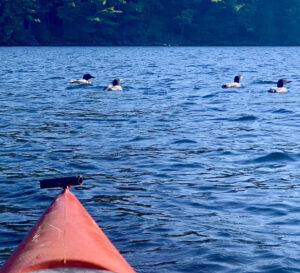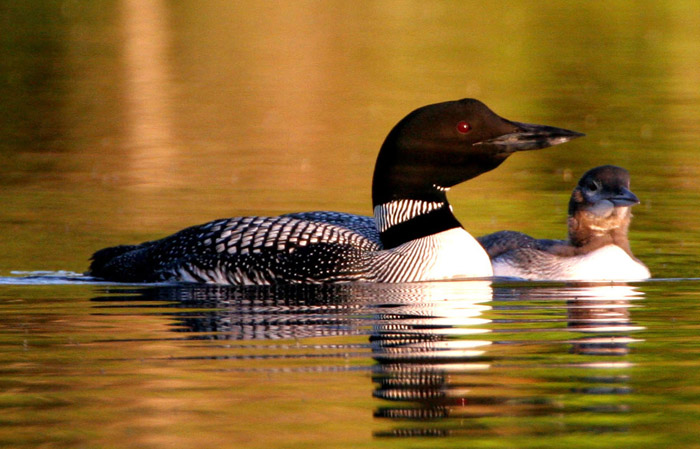By Joanne Conley

Eagle Lake is located in Essex County, tucked in between Paradox Lake and Ticonderoga.
I’ve seen bald eagles on Eagle Lake, but there is also an active loon population.
When my daughter-in-law told me about the Annual Loon Census, which has been taking place since 2001, I looked up our lake to see if it had been claimed.
It’s had no observers since 2017, so I signed on to be a 2020 observer.
The deal is pretty simple: Observe loons and count them on Saturday, July 18, between 8 and 9 a.m.
The census takes place across New York State. In the Adirondacks, it is coordinated by the Adirondack Center for Loon Conservation. The goal is to provide a snapshot of the loon population to guide management decisions and policies and to engage the public in loon conservation efforts.
We are fortunate to have a summer camp on Eagle Lake with a deck directly over the water. We listen to the call of loons in the early morning with coffee and in the evening with dinner.
We arrived at camp Friday evening, July 17, so I’d be up early for my 8 a.m. call to duty.
We spotted a group of five loons on Friday night, so I had a good feeling my official count assignment would be a success. But I would have to wait until the next morning to begin.
Eagle Lake is small enough that I thought I could observe most of it in a kayak. I launched on this sunny Saturday at about 7:30 a.m. to paddle to the west end of the lake, to begin my observation there and paddle my way back east as 8 a.m. approached.
As I paddled toward the Route 74 causeway that divides the lake, I spotted a group of four loons drifting to my right. They were quiet, not diving for fish, and not making much noise other than an occasional hoot.
I stopped paddling and watched. It wasn’t quite 8 a.m. My official duties had yet to begin, so I floated. And watched in wonderment. And I listened.
I dipped my paddle in the water slowly to see how close they’d let me get. Surprisingly, this didn’t seem to bother them.
So I drifted along with them until the clock struck 8, snapping pictures on my phone all the while. As close as I was, the phone camera did not do justice to this magnificent symbol of Adirondack wilderness. Note to self: Bring the digital camera for the 2021 count.
With four loons duly counted, I thought I’d better paddle toward the east end of the lake where I had seen a group of five last night. I skirted the shoreline but my eyes scoured the surface of the lake for the familiar pointed beaks. I could hear their calls, but I couldn’t see them.
I headed toward the state campground that had several groups of campers this weekend, and then circled back around, finally spotting a group of three loons.
For a few minutes I wondered if this could be the same group, minus one. Could they have swum up the lake that fast?
But this group was behaving very differently from the four “floaters” I spotted earlier. These loons were actively calling to each other, diving for fish and popping up in new locations, only to gather together as three again.
As I approached this group in the kayak, they immediately dove underwater. Nope. Not the same group, I rationalized.

A few pictures and a short video with sound to record their calls and my hour was just about up. Seven loons counted and more calling.
Back at camp my husband said he was on the porch with coffee and saw the group of three shortly after I left, confirming this was not a duplicate count.
To complete my assignment I had to record the number of birds I observed, the direction they were moving, weather and the like. I uploaded a map of the lake and marked where my sightings took place and sent my observations to the Loon Conservation Center.
Of the estimated 2,000 loons in the Adirondacks, I feel blessed to live in an area that is home to these magnificent birds, and even luckier to have the privilege of sharing a lake with them.
Editor’s note: Joanne Conley is Director of Warren County Tourism and president of the Adirondack Regional Tourism Council.
Copyright © 2020 Lone Oak Publishing Co., Inc. All Rights Reserved.
 Glens Falls Chronicle Serving the Glens Falls/Lake George region; Warren, Washington and northern Saratoga counties since 1980
Glens Falls Chronicle Serving the Glens Falls/Lake George region; Warren, Washington and northern Saratoga counties since 1980

